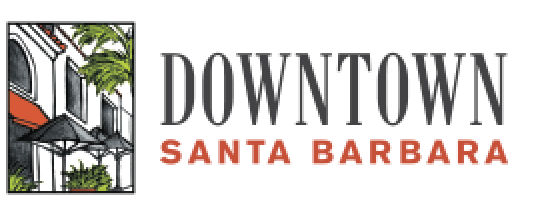State of State Street

Release Date: August 5,2016
Retailers worry about state of State Street

These State Street spaces near the corner of State and Carrillo streets in Santa Barbara are vacant.
Customers have walked into Amy Cooper’s Plum Goods storefront on State Street and asked her, “What’s going on with State Street?”
The shoppers are noticing an unusually high number of empty properties along the retail destination that has long been the main driver of the Santa Barbara’s economy. State Street has the most vacancies Cooper has seen since she opened her locally-sourced gift and home décor shop in 2010, she said.
“I’m worried about the state of State Street,” Cooper said. “It seems that some property owners don’t mind keeping their space empty. It just doesn’t feel the same.”
Santa Barbara’s State Street has been its economic backbone as the main draw for millions of annual visitors who travel from near and far. Yet, the changing retail landscape has transformed the corridor from a unique mix of mom-and-pop stores and small businesses to lower price point retailers and big chains.
A disconnect between property owners expecting pre-recession rents and potential tenants has, in part, led to increased vacancies, sources said.
Demand is uncharacteristically low for State Street properties, said Clarice Clarke, president of Lee & Associates.
“If you add up available square footage on State, it is higher than I have ever seen,” she said.
Brown paper lines the windows of Michael Stars at the corner of Carrillo and State streets, which closed abruptly in July. It sits next to the former True Religion store that has been empty for more than a year, as has the nearby old Boon Mee store at 915 State St.
Savvy on State, which opened at 911 State St. in 2011, will soon close as owner Erica Dahl plans not to renew the store’s lease. Across the street next to the Apple Store, the property at 930 State St. has sat vacant for about seven years despite numerous offers from potential tenants.
Five years ago there was about 40,000 square feet of available space from the 600 to 1000 blocks of State Street. That has swelled to more than 46,000 square feet, according to the Hayes Commercial Group second quarter report.
Certain locations have experienced high turnover or are perpetually vacant. The 700 State St. property has switched hands from Ma Dolce Vita, to Left at Albuquerque to Panera Bread and the space near Chapala and Victoria streets has changed from Hob Nob, to Arlington Tavern to now The Nugget.
“Once you get over 2,000 square feet, rent is tough for anybody to make work. Even big restaurant chains are struggling,” said Jim Turner of Radius Group. “There has to be a mind shift from the landlords. If we can get everyone together to devise a game plan it would benefit everyone.”
Seattle-based retail consultant Downtown Works noted in a 2015 study that the storefronts in downtown Santa Barbara are poorly maintained. They found an unbalanced mix of retailers — tourist-oriented stores and national retailers dwarf the amount of quality local/regional stores.
“It’s gotten so fractured on State Street. There has to be a little more cohesiveness,” Turner said.
The study noted that vacancy appears to be higher on State Street, especially in the Paseo Nuevo mall. The influx of discount stores, like the new Saks OFF 5TH or the Coach outlet, may attract more discount retailers or foreshadow the retailers’ departure, according to the study.
“Both Saks and Coach have turned over full-line stores to their discount versions. Poor sales would be the likely reason (and this can be a precursor to leaving the market altogether),” the study says.
High-end boutiques like Blue Bee have closed and the ones that remain like K. Frank are increasingly moving to Montecito or are being replaced by discount retailers, Clarke said.
“Some of the biggest factors are the pressure from online shopping and the homeless issue that’s not getting any better,” she said.
The Downtown Works plan identified several strategies to improve downtown. Organizers should create a plan that analyzes the demographics and habits of the downtown shopper, reach out to property owners, identify and support clusters of similar retailers, recruit retailers that thrive in the area and improve connections to disparate parts of downtown.
The Santa Barbara Downtown Organization is exploring a change that could lead to a healthier downtown. The DTO has a contract with the city to provide landscaping, maintenance and cleaning services and it manages the Business Improvement Districts that pay for marketing, promotions and events.
Yet, unlike other downtown organizations, it cannot provide enhanced security services, social service outreach and market studies due to its bylaws. It is looking into changing its classification so the DTO can take a more proactive role, Executive Director Maggie Campbell said.
No one is analyzing the mix of retailers. There are about 150 landlords looking out for their own needs, she said.
“State Street is the No. 1 reason visitors cite as why they come to Santa Barbara, but if we also can’t get locals to shop here then it may not be sustainable in the long-term,” Campbell said. “People need to realize that the health of State Street is the health of Santa Barbara. We need to look at the whole picture, as a sum of its parts.”
As Santa Barbara’s Average Unit Density Incentive projects come to fruition, their success will rely on resident-serving retailers, Campbell said.
“It’s time to figure out how to reinvent our downtown,” she said.
Property owners in Thousand Oaks have taken matters into their own hands by implementing the Thousand Oaks Boulevard Specific Plan.
Property owners pay a voluntary tax based on the value of their land, amounting to an average of about $330 a year. That pays for business renovations and independent studies. The specific plan, which also eased parking restrictions, helped fill the void left by dwindling federal funds for infrastructure improvements and the dissolution of the state’s redevelopment agencies, officials said.
On the bright side of the State Street retail scene, the La Entrada mixed-use development is poised to revitalize Lower State Street, bridging the waterfront to the downtown core. The Funk Zone is still in high demand and its lease rates — some above $6 a square foot triple-net — have surpassed State Street’s, brokers said.
Plum Goods offers goods handcrafted by local artists, which helped its business grow 15 to 20 percent each year from 2011 through 2013, Cooper said. A handpicked Spotify playlist echoes throughout the store, which adds to the customer experience — a differentiating quality in today’s successful shops, she said.
Stores like Chocolats du CaliBressan in La Arcada and Dave Lombardi’s Distinctive Art Gallery are expanding. The Red Piano recently opened at the former Statemynt Lounge at 519 State St. and an independent toy store is coming to State’s 500 block.
The new management team of the Paseo Nuevo mall — El Segundo-based Pacific Retail Capital Partners, New York-based Silverpeak Real Estate Partners and Los Angeles-based BMW Realty Advisors – have planned renovations that will breathe some new life into the downtown landmark, Clarke said. The team is enlisting the help of local brokerages — a new strategy that could improve the mix with some local retailers, she said.
“That will be a catalyst for change. The other will be the La Entrada project,” Clarke said.
• Contact Alex Kacik at akacik@pacbiztimes.com.


